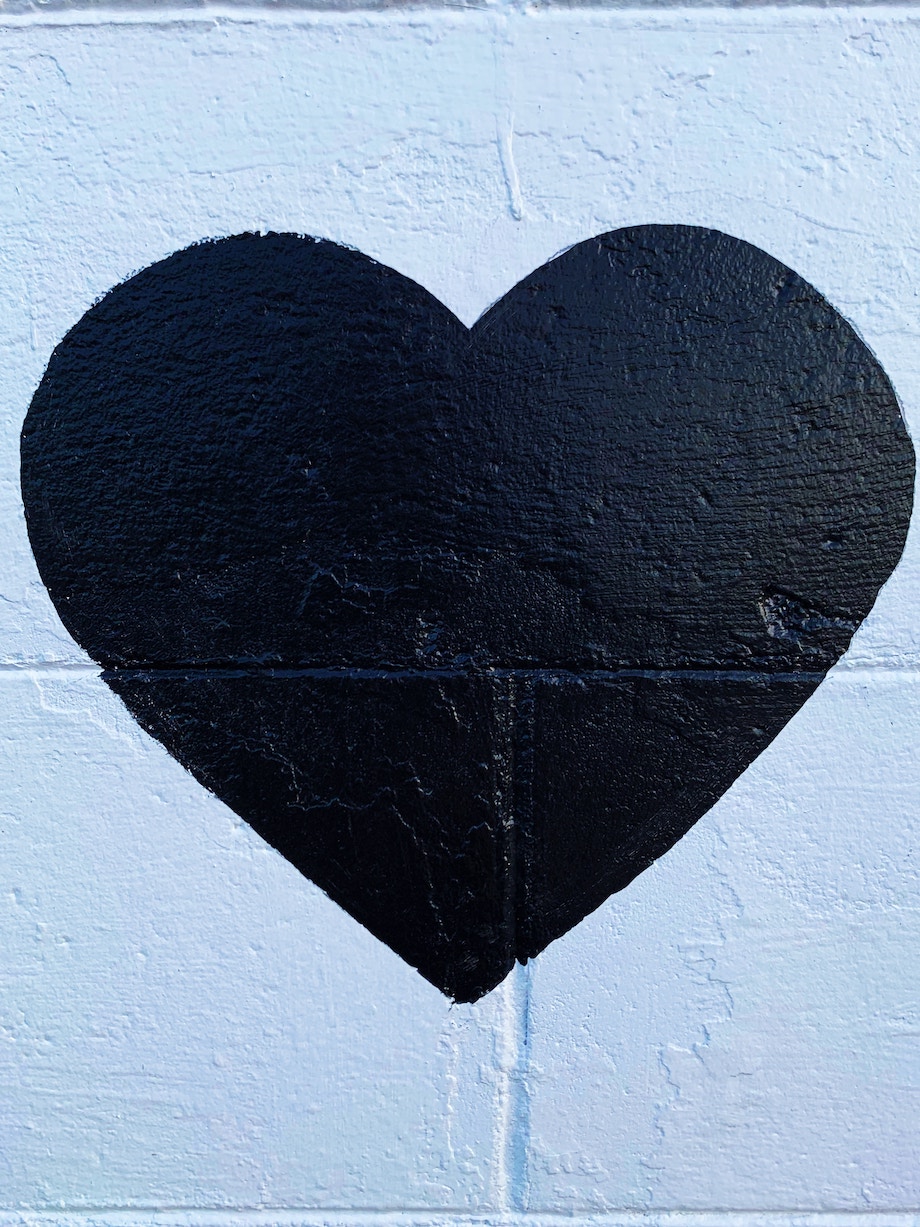 Anxiety disorders are very common so if you are suffering from anxiety know you are not alone. Anxiety affects adults but anxiety is a very common problem that affects children as well. I personally experienced anxiety and anxiety attacks as a child. Back then we called it a “nervousness problem”. I had daily anxiety but in addition would have these shaking spells after stressful events where it was difficult to calm down. I had a medication I would take that would help me to stop shaking and eventually become calmer. I have many vivid memories of these episodes.
Anxiety disorders are very common so if you are suffering from anxiety know you are not alone. Anxiety affects adults but anxiety is a very common problem that affects children as well. I personally experienced anxiety and anxiety attacks as a child. Back then we called it a “nervousness problem”. I had daily anxiety but in addition would have these shaking spells after stressful events where it was difficult to calm down. I had a medication I would take that would help me to stop shaking and eventually become calmer. I have many vivid memories of these episodes.
Many people who are experiencing autoimmune or chronic symptoms struggle with anxiety. Also, women are twice as likely to be affected by anxiety. I have my thoughts on why that is but I will save that for another post. Anxiety can be detrimental to living a full and happy life. In this post we will explore anxiety and how you have more control over it then you may realize.
AXIETY AND OUR PRIMITIVE BRAINS
Anxiety is a common issue in modern society, stemming from our primitive brains. Although our brains are wired similarly to those of our ancestors, we now live in a vastly different environment. Our ancestors faced daily threats. We on the other hand do not. The environment we are living in today is very different from our ancestors and even though our environment is quite different our brains function the same.
Anxiety can be understood as our brain’s way of protecting us. Our ancestors possessed a well-developed prefrontal cortex, which we still have today. This region of the brain is responsible for an essential function: planning for the future. This ability allowed our ancestors to survive various hardships by always considering worst-case scenarios. By anticipating potential dangers, they increased their chances of survival. Listening closely to these warnings enabled them to be prepared for the possible hazardous future ahead.
It is crucial to understand our evolutionary process. Our ancestors encountered threats at every turn, often resulting in life-or-death situations. Therefore, they developed a strong focus on worst-case scenarios, which facilitated their survival. Over time, our environment has changed significantly (no longer featuring lurking tigers), while our brains have remained relatively unchanged.
THE BRAIN DOES NOT KNOW THE DIFFERENCE
Most of the fears we experience today are unrelated to our survival, although they may feel like life and death in the moment. While our fears may not affect our survival, our thoughts can trigger the same physiological response as an actual threat.
When I first learned about the mind-body connection, a significant revelation was that the brain cannot tell the difference between reality and imagination. Therefore, our thoughts can elicit the same physical response as if the events were truly happening to us. Anxiety can be seen as this very response—an anticipation of what lies ahead or fear of undesirable outcomes and unknowns.
To alleviate anxiety, one approach is to reframe negative thoughts associated with anxiety. Anxiety itself is not a tangible entity; it is merely a fear of an uncertain or ominous future. Anxiety’s symptoms, however, are very real, but the underlying cause is not. It’s important to acknowledge this difference. Perceptions and thoughts regarding the future are not real; they are just thoughts. Anxiety exists solely in the future, not the present moment. The present moment is our only true reality.
A useful analogy to demonstrate how thoughts can trigger a physiological response is imagining biting into a juicy lemon. Just the thought alone can cause our mouths to water, as if we were actually biting into a lemon. You mouth watering is a physiological response to a throughs alone.
WHY WE CAN’T THINK OURSELVES OUT OF AXIETY
If anxiety (a physiological response aimed at keeping us safe) originates from our thoughts, you might wonder why we can’t think ourselves out of anxiety.
Unfortunately, it’s not that simple. Anxiety is a primitive response deeply rooted in our biology. Remember, our brains have not evolved or adapted to our modern world. In this chaotic modern world, there is much to fear, inundated by constant alarms, news, media, and personal struggles.
Chronic conditions can consume us, leading to a spiral of fear and control. We may fear pain, recurring symptoms, food, and movement. We immediately turn to Google for every new sensation, ache, or pain, often stumbling upon information that terrifies us. Being constantly connected to our devices exposes us to nonstop negative news and information.
All these factors contribute to keeping us in a perpetual state of fight or flight—a response that our ancestors experienced but then emerged from after the stressful event. The difference in our modern world is that many of us remain in this state continuously, even though the issues we face are often not matters of life or death. Or, may have found resolution but we can’t stop thinking about them and keep replaying what happened in our head. Our anxious thoughts trigger the body’s survival mode.

UNDERSTANDING THE ROLE OF THE UNCONSCIOUS MIND
Understanding more about the unconscious mind can be helpful as you move towards a world free from anxiety. The unconscious mind only comprehends two signals: safety or survival. Every thought we have falls into either the safety or survival category, and our body reacts accordingly. This applies to all humans; we are all wired this way. If you suffer from anxiety know there is nothing wrong with you; it is simply how our minds function.
Today, the majority of people live in a perpetual state of survival. What happens when we remain trapped in a cycle of fight or flight? As I mentioned earlier, our body instinctively reacts to protect us when we enter survival mode. Something remarkable occurs—the autonomic nervous system immediately takes action to aid our survival.
Consider instances when you were driving, or your child or another child was in the way of a moving swing at the playground or an object fell from a cabinet. Your immediate reactions, such as hitting the brakes, grabbing your child and warning them of the swing, or getting out of the way of the falling object, are actions initiated by your autonomic nervous system.
Your body acts instinctively, directing all its energy to your arms and legs to prepare you for physical fight or flight. During this process, the logic and thinking centers of the brain shut off entirely. Our bodies allocate all energy to our extremities to enable us to physically fight for our lives or escape the danger. Any bodily functions not necessary for survival are temporarily turned off. If our ancestors encountered a wild animal that might eat them this served them well. It gave them added power in their arms and legs to climb or run to escape.
I personally struggled greatly with panic attacks in the past, both as a child and as an adult. Well before I understood what I do now, these attacks were among the most terrifying experiences I’ve ever had. Anyone who has suffered from panic attacks can relate; the sensation of imminent death is overwhelming. This is precisely why it is impossible to rationalize your way out of a panic attack, even when you know deep down that you are not in mortal danger.
AXIETY IS NOT YOUR IDENTITY
A common occurrence when dealing with anxiety or any chronic illness is that we can begin to identify ourselves as individuals with anxiety. In reality, anxiety is just a primitive function of our body, doing what it knows to do. It may sound silly, but telling yourself that the anxiety you are experiencing is merely a primitive function and does not serve or benefit you because you are not in true danger can be helpful. The more we focus on anxiety and anxious thoughts, the more challenging it becomes to break free of them and they soon become a habit.
Our brains are incredibly efficient and strive to automate processes as much as possible. Habits are an excellent example of this efficiency. The brain filters through an enormous amount of information we receive every second, prioritizing the most important bits.
The reticular activation system controls our reality by filtering information from our senses, allowing us to prioritize critical information.
Our brains choose what to focus on, by using three filters. Distortion, deletion, and generalization. You can think of these as shortcuts that prevent information overload and help us analyze information quickly. Although the brain’s efficiency is beneficial, it has one major downfall. It limits our perception. Think of it as not receiving the complete story, only what our brain deems important in that particular moment.

THE ROLE OF OUR BELIEFS
So, what does the brain rely on when filtering information? The brain’s filtering process depends on our beliefs. It may sound crazy, but our perceptions are not our reality. What we perceive is determined by what our brain allows us to perceive, and this is entirely based on our beliefs. Our beliefs reside in the subconscious mind.
You may be asking where do our beliefs come from. It may surprise you that we form the majority of our beliefs between the ages of 1 and 7. During these ages we are busy absorbing everything around us, without conscious awareness. We unconsciously form beliefs about ourselves, the adults and people in our lives, and the world in general based on our experiences.
Keep in mind everyone’s beliefs differ, shaped by their individual experiences. None of the beliefs we hold are grounded in reality; they are merely what our subconscious mind absorbed during those formative years. By the time we reach adulthood, we are unaware of these beliefs, as they play in the background like a movie on a loop. When we encounter new information, our brains unconsciously filter and distort anything that doesn’t align with our existing beliefs or our perception of the world. Unbeknownst to us, the beliefs formed in our early years dictate our entire adult lives.
Additionally, new beliefs can form based on our life experiences. For example, receiving a chronic pain diagnosis might lead us to form a belief, influenced by medical professionals or authoritative figures, that we will never heal and will suffer indefinitely. The brain then tirelessly seeks evidence to support this new belief.
Understanding this crucial aspect empowers us to regain control. We certainly don’t want our beliefs to control and dictate our lives. This is why questioning your beliefs and working to change those that no longer serve you is essential. This work must be undertaken within ourselves. Each of us must take responsibility for the beliefs we hold, and as adults, we have the ability to change the beliefs that no longer serve us.
When we experience a re-occurring anxiety or panic attack, our brains search for evidence to support the thoughts causing the anxiety in the first place. The brain’s efficiency comes into play, seeking information that aligns with our beliefs. Thoughts such as “I will never get better” or “I am in so much pain today” or “my stomach is bothering me” are welcomed by the brain, which then distorts, deletes, or generalizes anything that contradicts those beliefs.
We all engage in this behavior; it is how our brains are wired. However, just because it is instinctive doesn’t mean we cannot do something about it. When we explore the mind-body connection, we have the opportunity to transform our lives.
ADDITCTION TO STRESS HORMONES
As you know, anxiety triggers a physiological response in the body, resulting in the release of stress hormones. Let’s chat a bit about how these hormones can be detrimental to our overall health.
This my sound crazy but when we live in a constant state of fight or flight, or survival mode, we unknowingly become addicted to the stress hormones. Physically, we experience a surge of energy, and we may inadvertently replay stressful events in our minds or obsessively think about our pain. Our bodies are essentially seeking the energy provided by the stress hormones. It may seem counterintuitive, but we can become addicted to fear or the emotional responses associated with a past event or current symptom. This further reinforces our anxiety.
Recognizing that all these functions are inherent to us as humans and exist to protect us puts so much power back in our hands. With this understanding alone, we can move toward freedom from anxiety. As humans, we often fail to realize that we have control over these processes, and we tend to blame our circumstances and past for our present experiences.
We seek healing from external sources, relinquishing our power to others when, in reality, we can do the work ourselves and not only heal our physical bodies but transform our entire lives. We can live fuller lives and be fully present. This is why I use the tagline “You Heal You.” When you realize that your thoughts and beliefs trigger a primal and normal response in your body, you can work to change those thoughts and beliefs.
Remember, the mind cannot differentiate between reality and imagination, so a thought can elicit a physiological response as if the events were actually occurring. Similarly, when you think of a past memory and experience all the associated emotions, your brain treats it as if it is happening in the present. The conscious mind sends signals to the unconscious, which then communicates with the autonomic nervous system, activating the survival response.
We are constantly perceiving our environment, and two individuals can experience the same surroundings but hold completely different perceptions based on their belief systems regarding themselves and the world around them. Have you ever talked to friend about a conversation that happened with another person and found their experience of what was said was very different from yours? This is a perfect example. We can experience the exact same thing with another person but both perceive it very differently thus leading to a completely different experience.

SENDING SIGNALS OF SAFETY
To initiate healing from anxiety or any chronic condition related to a dysregulated nervous system, you need to actively seek evidence supporting healing and safety. Remember, the brain operates solely in terms of survival or safety. Consciously seeking and becoming aware of evidence that aligns with safety and healing beliefs is an excellent starting point. Over time, your brain will subconsciously seek evidence to reinforce these new beliefs. And, overtime will then lead to a completely different identity. If you are currently identifying by your struggles this is a great thing for you to realize. What ails you is not your identity! Working to shift your perspective from someone who suffered from “x” to someone who is healing from “x” will automatically lead to habit changes that will reinforce this identity.
Rather than identifying as someone who is constantly anxious, you can identify as someone who is healing. Likewise, you can shift from perceiving yourself as someone in constant pain to someone who is pain-free. Habits will naturally follow over time.
BEING THE OBSERVER OF YOUR THOUGHTS
The most effective way to initiate this shift is to become an outside observer of your thoughts. This exercise is one of the first steps I introduced when I began delving into the mind-body connection. When you feel sensations of anxiety or pain, observe those feelings from an external perspective. I like to playfully dismiss them by labeling them as “silly.” For instance, I might say, “Oh, interesting. I am experiencing that silly feeling again. It’s not a big deal; it’s just a silly feeling, and I am not in any danger. Everything is okay, brain, body, and nervous system.” I also express gratitude to my brain, body, and nervous system for doing what they instinctively know to do—protect me. I thank them and let them know they can relax now, while still appreciating their intent. I affirm that I am safe and secure.
Being an observer of your thoughts trains your brain. It is one of the best exercises to train the brain, and over time, it aids in regulating the nervous system, helping you break free from a constant fight-or-flight state. This, in turn, can switch off genes (epigenetics) responsible for chronic symptoms. The specifics will vary for each individual, as we are all biologically unique. In my case, it was the HLA-B27 gene, associated with symptoms of ankylosing spondylitis and iritis, conditions I once struggled with severely. It’s a cascading effect.
AXIETY: THE MODERN DAY STRUGGLE ROOTED IN OUR PRIMITIVE BRAINS
Anxiety is a modern-day problem stemming from our primitive brains. While our ancestors faced daily threats, our rapidly evolving environment has presented us with different challenges. It’s important to understand the evolutionary origins of anxiety, as it allows us to reframe negative perceptions and beliefs. By recognizing anxiety as a normal physiological response aimed at protecting us, we gain the power to work on reshaping our thoughts and beliefs. Through conscious observation, questioning, and seeking evidence that supports healing and safety, we can take control of our lives. Remember “You Heal You”. Embracing this understanding empowers us to know healing is possible and so is a life free from anxiety and chronic symptoms and truly live a present and fulfilled life.
In Love, Heath + Gratitude,
Katie
